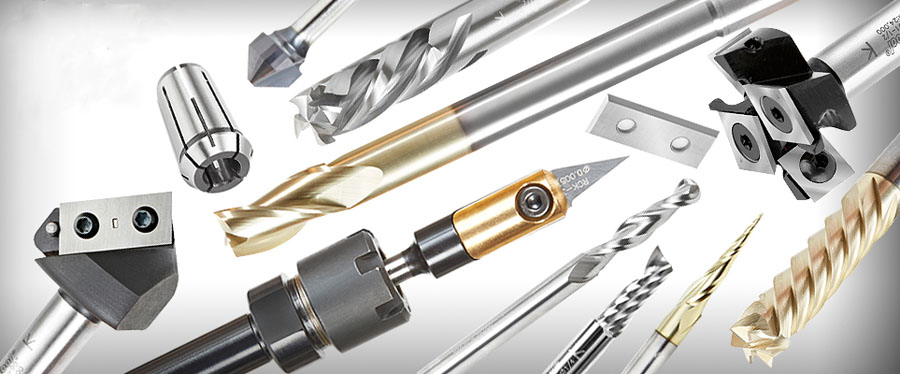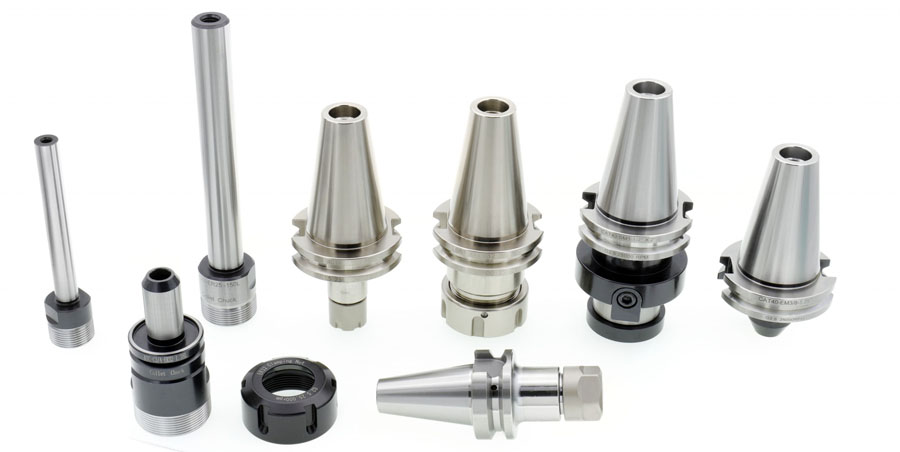The important position of tool selection in machining is self-evident. Learning to choose a tool can help you work with ease. Therefore, 15 rules for tool selection should be taken seriously.
1. The Most Important Thing In Processing Is The Tool
When any tool stops working, it means that production has stopped. But it does not mean that every tool has the same important status. The tool with the longest cutting time has a greater impact on the production cycle, so under the same premise, this tool should be given more attention. In addition, attention should be paid to tools with the most stringent requirements for machining key components and machining tolerances. In addition, tools with relatively poor chip control, such as drills, grooving tools, and threading tools, should also be paid attention to, because poor chip control can cause downtime.
2. Match With The Machine Tool
There are right-handed and left-handed knives, so it is very important to choose the right tool. Generally, right-hand tools are suitable for machine tools that rotate counterclockwise (CCW) (viewed along the main axis); left-hand tools are suitable for machine tools that rotate clockwise (CW). If you have several lathes, some hold left-hand tools, and others are compatible with left and right hands, then please choose left-hand tools. For milling, people usually tend to choose more versatile tools. However, even though this type of tool covers a larger processing range, you will immediately lose the rigidity of the tool, increase the tool flexural deformation, reduce the cutting parameters, and more easily cause machining vibration. In addition, the manipulator of the machine tool to change the tool also has restrictions on the size and weight of the tool. If you are buying a machine tool with an inner cooling through hole for the spindle, please also choose a tool with an inner cooling through hole.
3. Match With The Processed Material
Carbon steel is the most common material to be processed in machining, so most tools are based on optimized carbon steel processing design. The blade grade should be selected according to the material to be processed. Tool manufacturers provide a series of tool bodies and matching blades for processing non-ferrous materials such as high-temperature alloys, titanium alloys, aluminum, composite materials, plastics and pure metals. When you need to process the above-mentioned materials, please choose a tool that matches the material. Most brands have various series of tools, indicating which materials are suitable for processing. For example, the 3PP series of DaElement is mainly used to process aluminum alloy, the 86P series is specially used to process stainless steel, and the 6P series is specially used to process high-hard steel.

4. Tool Specifications
A common mistake is that the size of the selected turning tool is too small and the size of the milling cutter is too large. Large-size turning tools have better rigidity; large-size milling cutters are not only more expensive, but also take longer to cut. In general, the price of large-size tools is higher than that of small-size tools.
5. Choose Between Replaceable Blade Or Re-Grinding Tool
The principle to follow is simple: try to avoid grinding tools. Except for a few drill bits and face milling cutters, if conditions permit, try to choose replaceable blade type or replaceable head type tools. This will save you labor costs while obtaining stable processing results.
6. Tool Materials And Grades
The choice of tool material and grade is closely related to the performance of the material being processed, the maximum speed and feed rate of the machine tool. Choose more general tool grades for the material group to be processed, usually coating alloy grades. Refer to the “Grade Application Recommendation Chart” provided by the tool supplier. In practical applications, a common mistake is to replace the similar material grades of other tool manufacturers to try to solve the tool life problem. If your existing tool is not ideal, then changing to another manufacturer’s brand close to it is likely to bring similar results. To solve the problem, the cause of the tool failure must be clarified.
7. Power Requirements
The guiding principle is to make the best use of everything. If you have purchased a milling machine with a power of 20hp, then, if the workpiece and fixture allow it, select the appropriate tool and processing parameters to enable it to achieve 80% of the power of the machine. Pay special attention to the power/tachometer in the machine tool user manual, and select the tool that can achieve better cutting applications according to the effective power range of the machine power.
8. Number Of Cutting Edges
The principle is that more is better. Buying a turning tool with twice the cutting edge does not mean paying twice the cost. In the past ten years, advanced designs have doubled the number of cutting edges for grooving knives, cutting knives, and some milling inserts. It is not uncommon to replace the original milling cutter with an insert with only 4 cutting edges with an advanced milling cutter with an insert with 16 cutting edges. The increase in the number of effective cutting edges also directly affects the table feed and productivity.
9. Choose Integral Tool Or Modular Tool
Small size cutters are more suitable for overall design; large size cutters are more suitable for modular design. For large-format tools, when the tool fails, users often hope to regain a new tool just by replacing small and inexpensive parts. This is especially true for grooving and boring tools.
10. Choose A Single Tool Or A Multi-function Tool
The smaller the workpiece, the more suitable the compound tool is. For example, a multifunctional tool can combine drilling, turning, inner hole processing, thread processing and chamfering. Of course, the more complex the workpiece, the more suitable it is for multi-function tools. The machine tool can only bring you benefits when it is cutting, not when it is down.
11. Choose Standard Tools Or Non-standard Special Tools
With the popularity of CNC machining centers (CNC), it is generally believed that the shape of the workpiece can be realized through programming instead of relying on tools. Therefore, non-standard special tools are no longer needed. In fact, non-standard tools still account for 15% of total tool sales today. Why? The use of special tools can meet the requirements of precise workpiece size, reduce procedures and shorten the processing cycle. For mass production, non-standard special tools can shorten the processing cycle and reduce costs.

12. Chip Control
Remember, your goal is to machine the workpiece instead of chips, but the chips can clearly reflect the cutting state of the tool. Generally speaking, people have prejudices about chips, because most people have not received the training to interpret chips. Remember the following principle: good chips will not destroy processing, bad chips are just the opposite.
The inserts are mostly designed with chipbreakers, and the chipbreakers are designed according to the feed rate, whether it is light cutting finish machining or heavy cutting rough machining.
The smaller the chip, the harder it is to break. For difficult-to-machine materials, chip control is a big problem. Although the material to be processed cannot be replaced, the tool can be updated, and the cutting speed, feed rate, depth of cut, corner radius of the tool tip and so on can be adjusted. Optimizing chips and optimizing machining is the result of a comprehensive selection.
13. Programming
In the face of tools, workpieces and CNC machining machines, it is often necessary to define tool paths. The ideal situation is to understand the basic machine code and have an advanced CAM software package. The tool path must take into account the tool characteristics, such as ramping milling angle, rotation direction, feed, cutting speed, etc. Each tool has a corresponding programming technology to shorten the machining cycle, improve the chip, and reduce the cutting force. A good CAM software package can save labor and increase productivity.
14. Choose Innovative Tools Or Conventional Mature Tools
With the current development speed of advanced technology, the productivity of cutting tools can double every 10 years. Comparing the cutting parameters of the tools recommended 10 years ago, you will find that today’s tools can double the processing efficiency, but the cutting power has been reduced by 30%. The new tool alloy matrix is stronger and tougher, enabling higher cutting speeds and lower cutting forces.
Chipbreakers and grades have lower specificity for applications and wider versatility. At the same time, modern tools have also increased versatility and modularity, which together reduce inventory and expand tool applications. Tool development has also driven new product design and processing concepts, such as the overlord tool with both turning and grooving functions, high-feed milling cutters, high-speed machining, micro-lubrication cooling (MQL) machining, and hard turning technology. Based on the above factors and other reasons, it is also necessary to follow up the most preferred processing methods and learn about the latest advanced tool technology, otherwise there is a danger of falling behind.
15. Price
The price of cutting tools is important, but it is not as important as the production cost of cutting tools. Although knives have their corresponding prices, the true value of knives lies in their duties for productivity. The price of cutting tools only accounts for 3% of the cost of the parts. So please pay attention to the productivity of the tool, not its purchase price.


